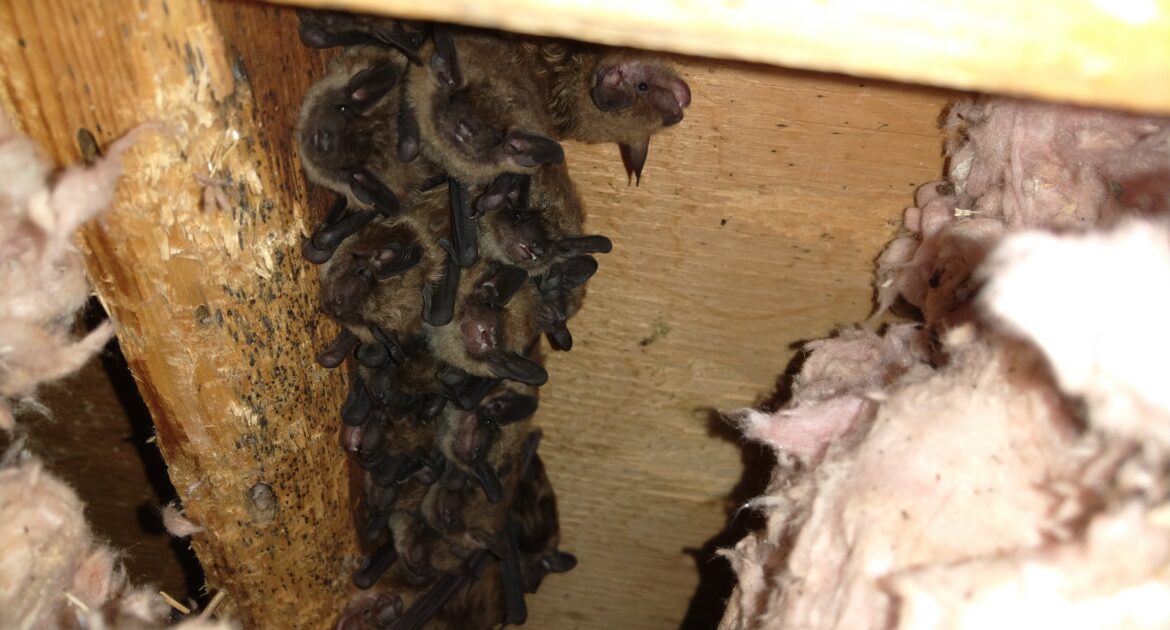Because bats and humans live on entirely different schedules, we sometimes forget about our winged cousins entirely. It’s only when we stumble upon them in our own homes that we remember they live among us. So, where do these mysterious creatures stay when humans aren’t around, and what makes them choose to stay in our spaces? Here’s a simple guide to help you decide when to call wildlife removal in Newmarket.
How Do Bats Choose Where to live?
There are over 1400 species of bats worldwide, and each has a slightly different way of making a living. Because these flying mammals occupy every kind of habitat imaginable, some need to find rugged protection from the elements, and others are content to stay in relatively simple shelters.
The species that live in Canada and the United States are very social, and they require enough roosting space for their entire colonies. Often, the best places to stay are caves with easy access to the outside world but enough depth to provide shelter from extreme conditions or predators.
Small groups of animals sometimes settle for hollowed-out tree trunks, abandoned sheds, or areas under bridges. Because they’re nearly defenceless against predatory birds, cats, and reptiles, they hang from high ceilings, only descending at night to fly off and search for food.
Human habitations are usually less-than-ideal places to live because people and their pets often create a lot of commotion. People also pose many dangers to their flying guests. Unfortunately, many creatures have little choice but to take advantage of manmade structures, because natural habitats are quickly declining.
When Do Bats Roost?
Bats are fully nocturnal animals who prefer to stay indoors during the day. During this time, they sleep and recover their energy. Most species emerge at or slightly after sundown. This is when they have the best chance to capture unsuspecting insects using their impressive echolocation abilities.
Hunting bats may fly as far as ten kilometres from their roost, but they sometimes stay closer when the outdoor conditions are difficult. Males are usually the most adventurous, as they must compete with other males for resources and female attention.
Pup rearing is a difficult job for flying creatures, and pregnant females often spend all day indoors preserving themselves. When pups are born, mothers devote much of their energy to providing milk. If threatened, their male companions are responsible for defending the roost.
Do Bats Move Between Roosts?
Bats are extremely reliable creatures, and they return to the same roosts every year. When temperatures change, however, they sometimes move between large colony areas and smaller ones, such as hollowed-out trees. When they hibernate, they largely stay put, but warming temperatures offer more flexibility.
Male bats need to breed with females unrelated to them, so they disperse to new colonies when nature compels them. Once an animal rears a family, it stays for good, providing safety and resources to its family.
When Should I Call a Bat Control Expert?
Bats are currently suffering from a fungal disease outbreak called white-nose syndrome. To protect their numbers, many governments have outlawed killing or exterminating colonies in your home.
Since spring is a pup-rearing season, a removal specialist may decline to remove animals until summer or fall. The best solution, therefore, is prevention. If you suspect your home might be an appealing roost for flying creatures, seal off all possible entry points — especially those near attics or high areas.
If you already have a population living in your home, call a technician at Skedaddle Humane Wildlife Control. We know all the rules and regulations on animal removal and can help you get rid of your unwanted guests humanely and legally.




